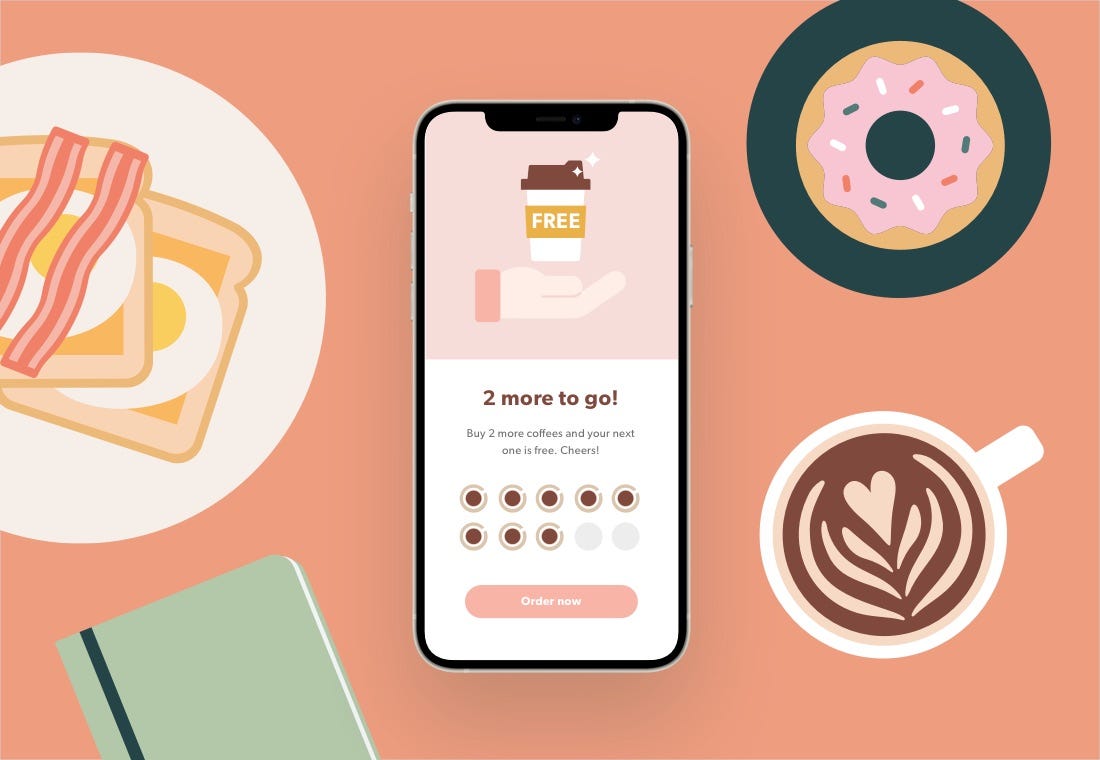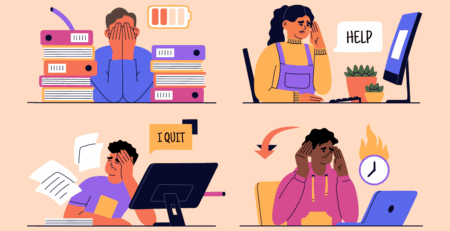These days, if you’ve got a phone, chances are you spend hours on apps. You use them to scroll through social media, order food, or manage work. In fact, users spend an average of 5 hours a day on apps. And it is estimated that over 255 billion apps were downloaded in 2023 alone. It’s clear that mobile is more than just a trend. It’s how the world moves.
So, if you’re building an app, keep in mind that you’re not just designing for screens. You’re designing for how people live, work, and play. And that means every detail matters.
Functionality is not the core purpose of an app. A good app is fast, intuitive, enjoyable, and built to stick around. Users are picky, and with millions of apps in the market, poor design simply won’t help. That’s why we’ve put together a full rundown of important app design tips to help you create something people will actually want to use.
Table of Contents
What is App Design?
App design is mainly about creating apps that are easy to use and pleasant to look at. That means combining visual design, motion, and user interaction in a way that feels natural. If you were to think of a well-designed app, two things would come to mind: business goals linked with what the user actually needs.
Designers need to understand how people use apps. If they keep up with changing habits and are aware of the technical nuts and bolts too, then it will help them a lot. At the end of the day, users just want something that works well and looks good doing it.
The Relationship Between App Design and Development
App design and development go hand in hand. You need both to make a great app.
Design covers the look and feel of the app. This covers everything, the interface and how the users move through the app.
Development is when you turn the design into a functional product. Developers write the code that brings the design to life. They make sure the app runs smoothly, stays secure, and can grow if needed.
For the app to turn out well, designers and developers need to work closely together. They should understand each other’s goals and challenges to build an app that looks good, works well, and helps both users and the business.
Design Tips
Here are some tips that you can keep in mind when designing your app:
Breaking Down Large Tasks into Smaller Ones
Breaking down big projects into smaller tasks is a smart strategy applicable to any task, not just in software development.
Often, we focus only on the big picture of our goals. It’s important to visualize each smaller step needed to reach those goals. This approach applies to onboarding processes, project plans, and assessments. It helps us delegate tasks effectively and choose the right tools for each stage of our journey.
Handling too much information at once can be overwhelming. By focusing on smaller steps and details, we can make our development journey more manageable and successful.
Reduce On-Screen Clutter
If you keep the screen clean and uncluttered, it becomes a lot easier to organize information and guide users. Try to remove extra prompts, menus, and icons so users don’t feel overwhelmed. Also get rid of anything else that takes up too much space. It might feel like each item is important, but putting too many things on one screen isn’t a good idea.
And whenever you start designing, keep the login process in mind. It should be easy, clean, and simple. Long forms should be divided into smaller steps or pages so that they are simpler to fill out.
Design Smarter, Not Harder. Source: LinkedIn
Enhance User Accessibility and Experience with Gestures
When technology is advancing, the way users interact with apps changes as well. Things like accessibility and voice commands have all significantly affected software use. For that, developers should find the gestures their target users prefer. They should also optimize app navigation in accordance with that.
Tracking these gestures makes it a lot easier to update apps for a better mobile UX and it also increases popularity.
Simplify Navigation
Simplifying navigation in your app is often common sense. Clear, straightforward navigation leads to a better user experience.
Complex navigation can cause confusion. Users might complete tasks incorrectly or access information out of context. This is not ideal.
When apps have simplified navigation:
- Engagement is effortless
- Information is easy to find
- Accessibility standards are met
- Icons and components are easy to understand
- Search effort is reduced
Consistency in Design Components and Typography
Consistency in design components and typography is important for brand identity and user experience. It enhances engagement, builds customer loyalty, and creates a familiar brand look.
Key elements to maintain consistency include:
- Typography
- Icons
- Color schemes
- UI components
Consistent design helps users navigate the app more easily. When users know what to expect, they can operate within the app efficiently.
Use White Space
In mobile app design, adding white space here and there is very important. What it does is, it helps highlight important elements and also makes it easier to visually see it.
It provides breathing space for all the information and visuals on screen. It makes sure that users can interact easily with the app. Prioritize screen space for all the important features. As for the less critical information, organize them with things like using cards.
Where Creativity Meets Code. Source: Twinr.dev
Use Heatmaps for Effective Design
You can use heatmaps to optimize user interaction points. They help track where users touch their screens most of the time. It also makes things easier for the designers because they can strategically place important elements.
Focus on Scannability
The app’s information should be easy to scan at the very first glance. Because users today read a lot of information online, and they do it quickly. So, the content should be presented in a way that is easy to understand with just a quick look.
Prioritize Content-first Design
Design is important, yes, but the content is what tops it. The information should be organized in a hierarchical order, also based on its usefulness and
While design is important, content remains crucial. Organize information hierarchically based on its usefulness and relevance. Start with a wireframe and add text and images later to ensure essential content is prioritized without compromising design.
Optimize for Single-Handed Use
Design your app to be usable with just one hand, considering the green zone of the mobile screen is easily reachable by the thumb. Place essential controls and interactions within this area for user convenience.
Optimize for Poor Connection
Prepare your app to function well even with poor or no internet connectivity. This ensures users can still accomplish key tasks when the connection is unreliable.
- Keep file sizes small for videos, audio, and images
- Use consistent local data caching
- Compress data to minimize bandwidth usage
- Test app functionality offline, simulating scenarios where internet access is limited or unavailable. Test in locations known for connectivity issues to ensure reliability
Animations and Microinteractions
Animations and microinteractions play a crucial role in improving user engagement and usability within apps. Animations add fluidity and visual feedback to interactions. This makes them more intuitive and engaging.
Microinteractions provide immediate feedback on user actions. This includes button clicks or form submissions, enhancing usability, and guiding user interaction.
Do’s
- Ensure that animations serve a clear purpose
- Opt for subtle and well-timed animations
- Consider users with visual impairments when designing
Don’ts
- Use animations purely for aesthetics
- Overdo animations, which can overwhelm users
- Rely solely on animations to convey information
One can take inspiration from Apple. Apple excels at using animations and microinteractions to enhance the user experience on iOS. For instance, subtle animations provide visual feedback during app interactions, making them intuitive. When in edit mode, app icons jiggle, guiding user interaction effectively.
Cross-Platform Compatibility
When you think of building an app, you keep in mind that it needs to work well on both iOS and Android. Cross-platform compatibility does exact that. Your app can easily run on different systems without lagging or needing a separate version for each.
This approach comes with a lot of benefits. First of all, it helps you reach more people. You are not limited to just iPhone or Android users. Your app becomes available to a wider audience and this can lead to more downloads and increased engagement.
It’s also easier on your budget. Think about it: when you build one version of your app, it works everywhere. You, in return, get to save time and money. And for that you don’t need two separate teams building the same thing for different platforms.
Cross-platform development also helps with things speeding up. You get to launch your app on multiple platforms at once or expand quickly after the first release. This way you start getting users and feedback faster.
In the end, it creates a consistent experience. No matter what device someone is using, your app will feel the same. This makes it easier for users to learn and stick with your app, something every product needs to succeed.
Do’s
- Choose a reliable cross-platform framework
- Design responsive layouts adaptable to various screen sizes
- Follow iOS and Android design guidelines for a natural user experience
Don’ts
- Neglect developer training or support for chosen frameworks
- Skip testing on different devices to ensure functionality
- Create a generic design that doesn’t fit well on any platform
Adaptive Design
When you design with adaptive principles, your app can adjust to various screen sizes and orientations. It ensures that your app’s layout, content, and features look good and work well on smartphones, tablets, and desktops. This adaptability makes sure users get a consistent and user-friendly experience, no matter how they access your app. It’s crucial for usability and accessibility, catering to a wider audience and different devices.
Your App. Your Rules. Source: Medium
Implement Dark Mode
Dark mode is becoming very popular. Everyone prefers it over light mode. The reason being it offers a sleek, modern look that many users generally prefer. It’s even better in low-light settings because it reduces eye strain by lowering the screen’s brightness. This one thing makes it a lot more comfortable, especially for longer use. It also helps save battery on phones with OLED or AMOLED screens because dark colors use less power. If you add a dark mode option to your app, it can improve user satisfaction and attract even more who like this style and its practicality.
Personalization Options
Letting users personalize their app experience boosts engagement and satisfaction. This can mean offering different themes or color choices that match their tastes. Adjusting font sizes helps users with different visual needs, improving accessibility. Personalizing content recommendations based on user actions or preferences keeps users engaged by showing them relevant content. Allowing users to customize their app experience creates a more enjoyable interaction, strengthening their connection to your app.
Feedback Mechanism
All designers should make it simple to give feedback within the app. This is important if they want to understand what users want or to improve features and any issues that might arise over time. Collecting feedback can help you continuously improve your app to meet user needs and expectations.
Security Measures
Make sure your app has strict security and you are applying strong measures. Use encryption to save user data, and use secure authentication methods to protect user accounts. Conducting regular security audits is another way to fix and identify any vulnerabilities. When you take these measures, they help you build trust with users and make sure the data is protected and that the apps operate easily. Taking these steps shows that you are committed to maintaining a safe environment for users and how they interact with your app.
If these principles are followed and everyone is responsive to user needs, then the designers can create experiences that relate deeply with users. This can also promote long-term engagement and loyalty.
Are you ready to improve your app’s design? If yes, start implementing these tips today. We can guarantee these tips will help you create a user-friendly, engaging, and secure experience. Visit our website for more information.
FAQs
- How does dark mode help my app?
Dark mode looks modern, is easier on the eyes (especially at night), and can help save battery on certain screens. Many users simply prefer it.
- How can I make my app more secure?
Protect your users by keeping their data encrypted, using safe logins (like two-step verification), and regularly checking your app for any security issues.
- Why should I care about user feedback in design?
Listening to users helps you understand what they want, fix what’s not working, and improve the app over time. It keeps users happy and coming back.
- Why keep app navigation simple?
When your app is easy to navigate, users can find what they need without getting lost. It makes your app more user-friendly and accessible for everyone.
- How do animations and tiny visual cues help?
Little animations and effects give users feedback and make the app feel more alive and intuitive. They help users know what’s happening and where to go next.
- How can I make my app work better with weak internet?
Keep your app light by reducing file sizes, store some data locally, and test how your app works offline or with slow connections. This keeps things running smoothly for all users.


















